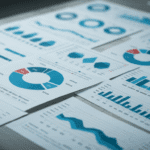During my recent travels there were a lot of comments around either the cost of a data warehouse or the lack of value being perceived from the data warehouse. As I dug deeper into the conversations it became clear why all the questions were being asked. Quite simply, those posing the questions did not really understand how to calculate or compare “Total Cost of Ownership” or “Return On Investment.” Although they are two separate ideas, they are closely related and I thought we can tackle them in one blog post. I will let your comments and questions determine if more
During my recent travels there were a lot of comments around either the cost of a data warehouse or the lack of value being perceived from the data warehouse. As I dug deeper into the conversations it became clear why all the questions were being asked. Quite simply, those posing the questions did not really understand how to calculate or compare “Total Cost of Ownership” or “Return On Investment.” Although they are two separate ideas, they are closely related and I thought we can tackle them in one blog post. I will let your comments and questions determine if more needs to be devoted to either topic.
Let’s start where the money goes out, “Total Cost of Ownership”. The most common comment I get is that TCO is high although the real cost is not known or when pressed as to the cost of the alternatives, the alternative cost is not known either. People are simply looking at a single number and not the complete costs. Many papers have been written about how to calculate total cost. One needs to include the hardware, software, and people cost of the warehouse, but they also need to include the costs of the total environment, not just the core environment.
I like to talk about the “Total Cost of Success.” How much time and money is being spent in moving data around to make it useful? Are the users getting data directly or are they getting extracts into Excel (where costs are ignored)? Are the costs associated with the data quality and governance being taken into account?
If you know the costs, the next question is whether or not you are using the system in the most optimal manner. Are you using manual process where automated tools are available? Are you using optimization techniques that minimize data replication and CPU utilization or are you creating wasteful processes that only lead to higher cost with no added benefit?
And then you need to make a comparison to not having the environment. What are the costs of alternative solutions? Are the savings of the removal of data marts, cubes and replicated data being subtracted for a centralized solution (or accounted for in the alternative)?
Before one complains about the total cost of ownership make sure that your facts are straight. If that is done then you can realistically start to remove cost.
The other side of the coin is that while the cost is “high” there is little value perceived as coming from the data warehouse environment. Many questions are being asked around ROI and the first step in remembering some basic math: If “R” is unknown then “I” better be small. Of course if “R” is infinite then “I” almost does not matter
Many people are unable to even take a guess at the return from the data warehouse. They know it is busy and users are generating a lot of reports. They know that if it was turned off people would not be happy, but what value is actually derived from having the environment? It is very important that a solid plan is in place for the measurement and communication of the “return” from your “investment.”
If you have a plan, then are you executing against it? Did you have a business case that justified the environment and how are you doing against that business case? What metrics were you trying to focus on and how have they changed over time? Can users point to specific actions they have taken that lead to new revenue, saved expenses, increased the timeliness of their actions, or in some way created measurable benefit? Are you even talking with the business owners to understand this value?
In absence of a plan I would suggest the following mantras that are easy to ask and quickly get to the heart of the matter:
- If you are not making decisions, then stop asking questions – simply put, what reports and processes are being run that drive no new insight or value? Get rid of them.
- If you are not taking action, then stop making decisions – again, where are you making a decision but due to politics, infrastructure, third party actions, or simply authorization you are not able to act on that decision? Understand your roadblocks and remove them
- If you are not measuring your result then stop taking your action – any significant action should be accompanied by a simple plan that states when and how you are going to measure its effect. Is this something simple that can be measured in customer response next week or is it a longer term strategic action that needs months to understand the impact? Know this up front and you will build in a ROI calculation in your process.
Before you start questioning the value of your environment, and complaining that it “cost too much,” get some simple facts in place. This will put your problems in perspective and make your decisions and actions much clearer. It will also help you when someone else comes along questioning the viability of the data warehouse environment.






